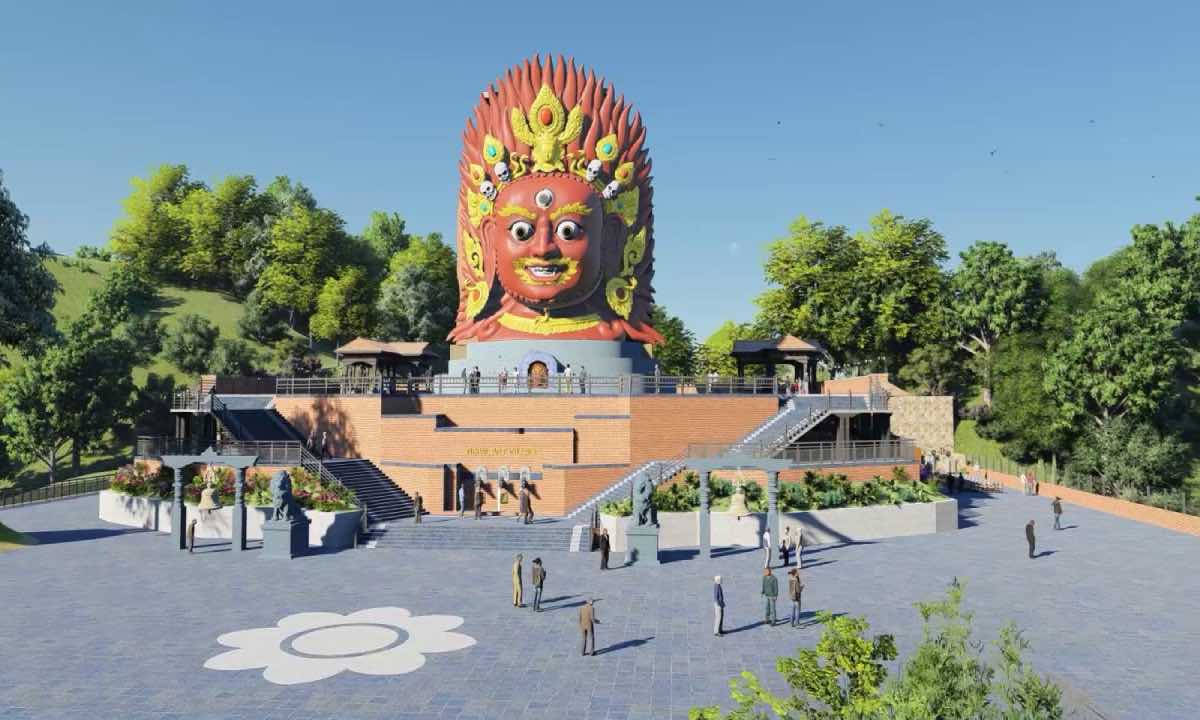News writing workshop in collaboration with UNESCO begins at St Xavier’s College
1 day ago
We are a team of professional management and journalists — one of the best in the Nepali media. Our duty toward our readers is to provide them with impartial news, bold views, in-depth analysis and thought-provoking commentary. We shall do this without fear or favor, and we shall be guided by nothing but our conscience.
Know More
KATHMANDU, Aug 22: The construction of 'Nepal Art Village' with the face of the world's largest Bhairav's Khwapa (Mukut) has started at Champi in Lalitpur Godavari. A visionary project with the motto of 'Heritage for Unity' aims to create a legacy through unity that celebrates Nepal’s rich artistic heritage while fostering sustainable development.
According to Rupak Man Maharjan, founder member and spokesperson of the project, the Khwapa will be constructed using Panchdhatu (sacred five metals), will be 72 feet high, 58 feet wide and weigh 65 tons.
Khwapa will be framed and assembled in a five-storey RCC building. The front of the building will have a bhairab mask and the building will be decorated with the establishment of an art museum inside the building. It is believed that the world's biggest Bhairav's Khwapa will be recorded in the Guinness Book of world Records.
In the first phase of the project, which will be spread over a total area of 238 ropani, Bhairav's Khwapa and other Heritage area will be constructed in 52 ropani and Kalagram will be built in 186 ropani area.
'With the observation of Bhairav, information related to Bhairav can be studied,’ said spokesperson Maharjan, '16 types of idols of Lord Ganesha and 64 different idols of Bhairav will also be kept in the building premises.'
It is said that one can observe the Kathmandu Valley and the picturesque Himalayas from the eyes of Bhairav (Bhairav Drishti) at a height of 42 feet.
Similarly, a dining hall and a meeting room will be built inside the premises where Raithane (aboriginal) dishes of different communities will be available. Likewise, physical artefacts such as temples of goddesses reflecting the traditional lifestyle, dhungedhara, ponds and gardens, exhibition halls, auditoriums, theaters, helipads, ancient settlements, old age homes, marriage ceremony halls, yoga centers, banquets, tent camps, adventure and recreational sports, swimming pools will be other facilities inside the Heritage premises.
The aim of the project is to develop and promote it as an art city. According to Maharjan, art will be seen in every infrastructure that will be built there. Construction of Khwapa was started under the leadership of Senior artist late Rajkumar Shakya. At present, the artist team led by Shakya's sons Swarup Shakya and Saurabh Shakya are continuing the work of this repoussé work where the late Rajkumar Shakya had left off.
Although the foundation stone of the project, which was started in the year 2074 B.S. by consolidating/collecting the land in the vision of the famous sculptor Rajesh Awale, it was formally laid in the year 2077. The construction process was delayed due to the death of the founder president and famous artist Rajkumar Shakya. President Rajendra Shakya of Nepal Art Village Pvt. Ltd. said that Bhairav Khwapa's construction work is going on at a fast pace presently.
According to Shakya, the project was started with the involvement of energetic art lovers, businessmen, social entrepreneurs and prominent and enlightened personalities of the society. In Board of directors along with the chairman Rajendra Shakya the company has Rajesh Awale, Rupak Man Maharjan, Jiwan Ratna Shakya, Madan Man Maharjan, Urmila Shakya and Sanuchhori Shakya.
Rupak Man Maharjan, the founding member and spokesperson of the project, said that the project was started with the aim of researching and developing the necessary plans and programs for the revival of Nepalese art and culture, exposure of traditional skills, skills promotion and tourism promotion.
Leave A Comment